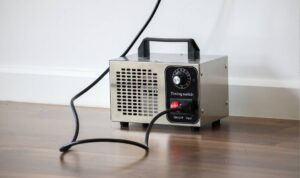Replacing a furnace is a significant decision for any homeowner. It involves understanding various types, costs, and the right timing to ensure efficient heating and cost-effectiveness. This comprehensive guide will delve into the intricacies of furnace replacement, helping you make an informed decision.
Introduction to Furnace Replacement
A furnace is more than just a heating unit; it’s the heart of your home’s comfort during colder months. However, like any appliance, it has a lifespan, and understanding when and how to replace it is crucial. This guide will explore the signs that indicate a need for replacement, the types of furnaces available, and the costs involved.
Understanding the Need for Replacement
The decision to replace a furnace should not be taken lightly. Several factors contribute to this decision, including the age of the unit, frequency of repairs, and changes in heating efficiency. A furnace typically lasts between 15 to 20 years. If your unit is approaching or has surpassed this age range, it’s time to consider a replacement.

Types of Furnaces
- Electric Furnace: Ideal for areas with milder winters, electric furnaces are affordable to install but can have higher operational costs.
- Gas Furnace: Common in colder regions, gas furnaces offer efficiency and reliability. They use natural gas, a cost-effective and widely available fuel source.
- Oil Furnace: These are less common but can be found in certain areas where oil is a more accessible fuel.
- Propane Furnace: A good option for areas without natural gas access, propane furnaces are efficient and compact.
- Heat Pump: An alternative to traditional furnaces, heat pumps can provide both heating and cooling, making them a versatile option.
Cost Considerations
The cost of furnace replacement varies widely based on the type of furnace, installation complexity, and geographic location. On average, homeowners can expect to spend between $2,500 and $6,000 for a new furnace, with high-efficiency models costing more.
When to Replace Your Furnace
Knowing when to replace your furnace can save you from unexpected breakdowns and inefficient heating. Look for these signs:
- Increased Repair Frequency: If repairs become more frequent and costly, it’s time to consider a replacement.
- Inconsistent Heating: Uneven heating across different rooms can indicate a failing furnace.
- Rising Energy Bills: An increase in energy bills, despite consistent usage, suggests declining furnace efficiency.
- Strange Noises: Unusual sounds like banging, popping, or rattling can be a sign of mechanical issues.

Choosing the Right Furnace for Your Home
Selecting the right furnace involves considering several factors:
- Size and Capacity: The furnace should be appropriately sized for your home. An oversized or undersized unit can lead to inefficiency and discomfort.
- Energy Efficiency: Look for furnaces with a high Annual Fuel Utilization Efficiency (AFUE) rating. The higher the AFUE, the more efficient the furnace.
- Type of Fuel: Consider the availability and cost of fuel in your area. Natural gas is typically the most cost-effective and efficient option.
- Budget: Balance your upfront costs with long-term savings. Higher efficiency models may cost more initially but can save money in the long run.
Installation and Maintenance
Proper installation and regular maintenance are key to the longevity and efficiency of your furnace. Hire a qualified HVAC contractor for installation and ensure regular maintenance, including filter changes and annual inspections.
Financing and Incentives
Many homeowners may find the cost of a new furnace daunting. However, financing options, rebates, and incentives can make it more affordable. Check with local utility companies and government programs for available offers.

Conclusion
Furnace replacement is a significant but necessary investment in your home’s comfort and efficiency. By understanding the types of furnaces, recognizing the signs that indicate a need for replacement, and considering the costs involved, you can make an informed decision that ensures warmth and efficiency for years to come. Check our furnace repair service.
FAQ:
How often should I replace my furnace?
Typically, a furnace should be replaced every 15 to 20 years, depending on its maintenance and performance.
Is it worth investing in a high-efficiency furnace?
Yes, high-efficiency furnaces can significantly reduce energy bills and are environmentally friendly, making them a worthwhile investment.
Can I install a new furnace myself?
Furnace installation requires professional expertise due to safety and efficiency concerns. It’s recommended to hire a qualified HVAC contractor.
What is the most energy-efficient type of furnace?
Gas furnaces, especially those with a high AFUE rating, are generally the most energy-efficient.
Are there any government rebates for furnace replacement?
Yes, many governments offer rebates and incentives for installing energy-efficient furnaces. Check local programs for details.



